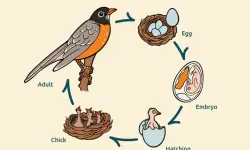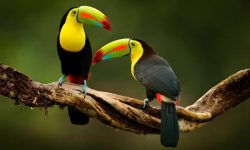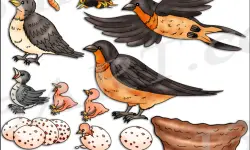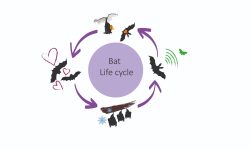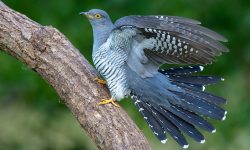Ostriches are among the most unique and fascinating birds on the planet. Known for their enormous size, powerful legs, and incredible speed, these flightless giants have captured the imagination of people around the world for centuries. While most people are familiar with the common ostrich, there are several different species and subspecies of ostriches, each adapted to unique environments across the globe.
In this article, we will explore 8 different types of ostriches, their unique features, behavior, habitats, and the conservation efforts that are crucial for their survival. Whether you’re a bird enthusiast or simply curious about these incredible creatures, read on to learn everything you need to know about ostriches!
1. Common Ostrich (Struthio camelus): The Giant of the Bird World
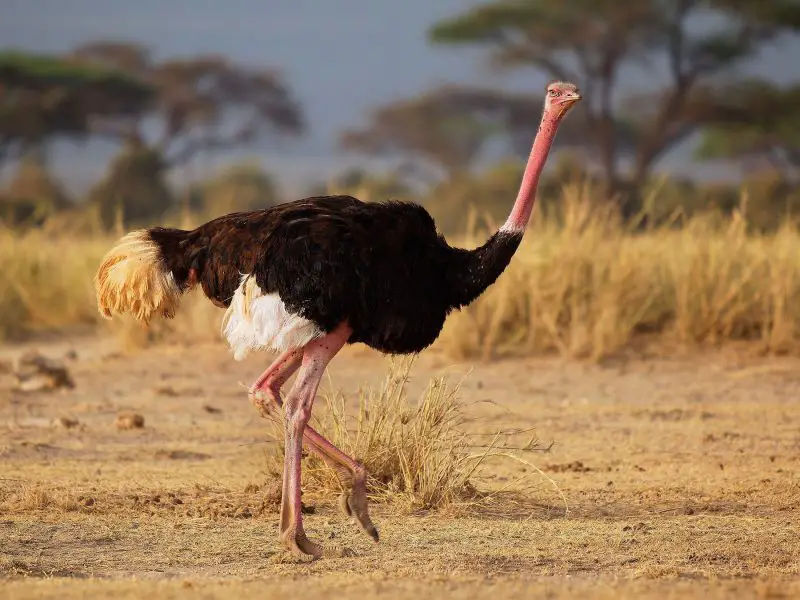
Physical Characteristics of the Common Ostrich
The Common Ostrich (Struthio camelus) is the largest living bird, standing up to 9 feet (2.7 meters) tall. Males typically weigh between 300 to 350 pounds (136 to 158 kg), while females range from 220 to 290 pounds (100 to 130 kg). Despite their impressive size, ostriches are flightless due to their large bodies and small wings. They have powerful muscular legs designed for running, capable of reaching speeds of up to 45 miles per hour (72 km/h), making them the fastest land birds. Their strong legs not only aid in running but also serve as a defense mechanism, with powerful kicks that can deter predators like lions or hyenas. Their two-toed feet also help with stability and speed while running, contributing to their agility.
Plumage and Adaptations of the Common Ostrich
Male common ostriches are known for their black plumage with white-tipped wings and tails, which they use during courtship displays to attract females. Females and young ostriches have more brownish-gray feathers, which provide camouflage in their natural habitats. This adaptation helps them remain hidden from predators when they are nesting. Their long necks provide a wide field of vision, allowing them to detect danger from far away, an important trait for survival in the open savannas and grasslands they inhabit. The long legs also make it easier for them to cover large areas in search of food and water.
Habitat and Behavior of the Common Ostrich
Native to sub-Saharan Africa, the common ostrich thrives in open grasslands, savannas, and desert-like environments. Ostriches are primarily herbivores, feeding on a variety of grasses, seeds, and roots. While they prefer to stay in small groups, they can also live solitarily, depending on environmental conditions. These birds are well-adapted to dry, arid environments, capable of surviving without water for long periods by obtaining moisture from the plants they eat. Ostriches are not particularly social except during breeding seasons. They often form loose groups that offer protection in numbers, but each ostrich typically maintains its own territory.
Reproduction of the Common Ostrich
The breeding season of common ostriches is marked by dramatic courtship rituals. The male performs a series of dance moves, fluffing his feathers and making booming calls to attract a mate. Once the female selects a partner, they form a monogamous pair during the breeding period. The female lays her large eggs in a shallow nest in the ground, and both parents take turns incubating them. Males often guard the nest at night, while females incubate during the day. The incubation lasts for 40 to 45 days, after which the chicks hatch and are able to walk within hours of birth. Both parents protect and care for the young, with the male guarding them from predators while the female feeds them.
2. Somali Ostrich (Struthio molybdophanes): The Beautiful Blue-Necked Wonder
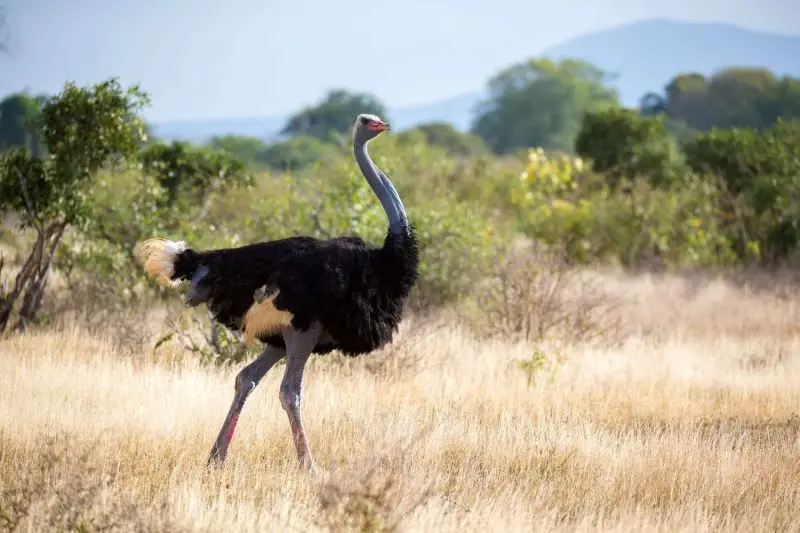
Physical Characteristics of the Somali Ostrich
The Somali Ostrich (Struthio camelus molybdophanes) is a medium-sized species of ostrich, standing at approximately 8 feet (2.4 meters) tall. Males are generally larger than females and possess a distinctive feature—blue skin on their necks and legs. This blue coloration, especially prominent in males, is not only eye-catching but also serves an important role in attracting mates during the breeding season. The striking blue skin of the male Somali ostrich is thought to be a signal of fitness, signaling to females that he is a healthy and dominant male, which plays a role in their courtship behavior.
The blue skin is made up of collagen fibers that can stretch and give the ostrich’s skin a bright, glossy appearance. It is most noticeable during the breeding season when males are actively trying to attract females. This feature distinguishes the Somali ostrich from other ostrich species and contributes to their unique physical appearance.
Habitat and Behavior of the Somali Ostrich
The Somali ostrich is native to the Horn of Africa, found in Somalia, Ethiopia, and Kenya. This species thrives in dry, semi-arid regions like scrublands and open grasslands, where it has evolved to survive in extreme heat and scarce water. Unlike other ostriches that favor more open or savanna-like environments, the Somali ostrich is adapted to these rugged conditions, extracting moisture from the plants it eats to minimize reliance on direct water sources.
Unlike other ostrich species, Somali ostriches are generally solitary. They are often found alone or in small, loose groups due to the scarcity of food and water in their habitat, which makes large groups unsustainable. Their territorial behavior is more pronounced than in other species, with males claiming and defending territories, especially during the breeding season. These territories are marked by the prominent blue skin on the males’ necks and legs, which is also used to attract females. Additionally, males make low, booming calls to communicate with other ostriches in the area.
Reproductive Behavior of the Somali Ostrich
The Somali ostrich exhibits unique reproductive behavior compared to other ostrich species. During the breeding season, mating pairs form, but their interactions tend to be less communal than in larger species. The male plays a central role in courtship, using his vivid blue skin as a display to attract females. His bright coloration, along with courtship dances and booming calls, signals his health and ability to protect a territory.
Once paired, the female lays her eggs in a shallow nest, and both parents take turns incubating them. The female incubates the eggs during the day, while the male guards the nest at night. This shared incubation helps ensure the eggs are protected from predators and the harsh conditions of the environment.
After about 40 days, the eggs hatch, and both parents continue to protect the chicks. The Somali ostrich’s reproductive behavior reflects a balance of solitary and cooperative strategies that help ensure the survival of their young in a challenging environment.
3. North African Ostrich (Struthio camelus camelus): The Desert Survivor
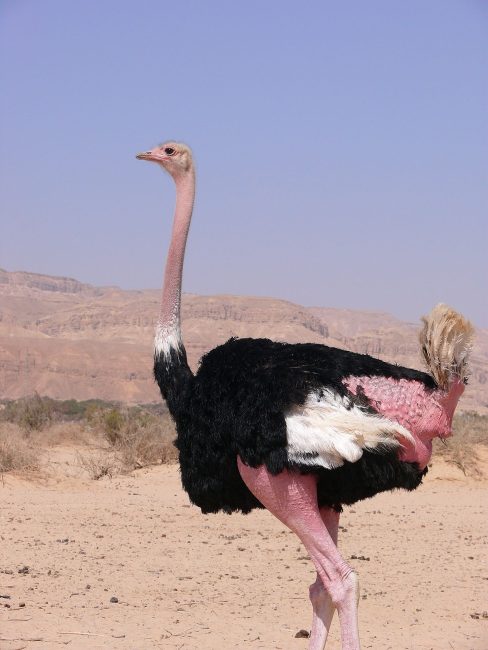
Physical Characteristics of the North African Ostrich
The North African Ostrich (Struthio camelus camelus) is a subspecies of the common ostrich, native to the North African region, including Morocco, Algeria, and Egypt. This subspecies is characterized by its light-colored plumage, which provides excellent camouflage in the desert and semi-desert environments where it resides. The pale feathers help the ostrich blend into the dry, sandy landscapes, providing a measure of protection against predators.
Male North African ostriches are particularly large, often reaching heights of up to 9 feet (2.7 meters) and weighing around 350 pounds (158 kg). This makes them one of the largest bird species in the world. The males’ impressive size, coupled with their strength and speed, helps them defend their territory and ensure their dominance during the breeding season. Females are typically smaller, but still strong and capable of defending themselves and their nests.
Habitat and Behavior of the North African Ostrich
The North African Ostrich is incredibly well-adapted to life in the desert. Their ability to survive in extreme temperatures—both hot and cold—sets them apart from many other bird species. They are capable of enduring intense heat during the day and cold at night, thanks to their adaptations to the harsh desert environment. They are often found in open grasslands, semi-deserts, and sparse scrublands, where they have access to grasses, fruits, seeds, and other desert plants that make up their diet.
These ostriches are territorial and tend to stay in small family groups or pairs, especially during the breeding season. Males are highly protective of their territory and will often defend it vigorously, using their powerful kicks to ward off intruders. In some cases, males also engage in displays to mark their territory and attract potential mates. These behaviors help maintain order and reduce conflict among competing males.
Despite being capable of surviving in challenging desert conditions, North African ostriches require ample space to roam. Their territories often encompass large areas, and they move freely across these expanses in search of food and water. Their excellent vision allows them to spot predators and potential threats from a distance, which helps them avoid danger and react swiftly when necessary.
Conservation Status of the North African Ostrich
The North African Ostrich is currently classified as endangered due to several threats to its survival. Habitat loss is one of the primary reasons for the decline in the population of these remarkable birds. As agricultural expansion continues across the North African region, much of the land that once supported ostriches is being converted for farming, reducing the natural habitat available for these birds.
Poaching is another major threat to the North African ostrich. Historically, the species has been hunted for its feathers, meat, and eggs, which has further contributed to their decline. The loss of habitat combined with hunting pressure has caused the population of North African ostriches to dwindle significantly in the wild.
To help protect the North African ostrich, several conservation programs have been put in place. These efforts focus on establishing protected areas and breeding programs to stabilize the population. By creating sanctuaries where ostriches can roam freely without the threat of poaching and by managing breeding in controlled environments, conservationists aim to help restore the species to a sustainable population level.
4. Masai Ostrich (Struthio camelus massaicus): The Colorful East African Bird

Physical Characteristics of the Masai Ostrich
The Masai Ostrich (Struthio camelus massaicus) is a visually striking species native to East Africa, primarily found in Kenya and Tanzania. One of the most distinguishing features of the Masai Ostrich is its vibrant red neck and legs, which stand out against the natural surroundings. This red coloration is more pronounced in males, especially during the breeding season, and is thought to play a key role in courtship by attracting females.
The male’s body feathers are black, contrasting with the bright red of his neck and legs, which makes him easily identifiable. Females, on the other hand, have more subdued brownish-gray feathers, helping them blend into the environment, particularly during the nesting period. This camouflage is vital for protecting them from predators while they incubate their eggs.
Habitat and Behavior of the Masai Ostrich
Masai ostriches are predominantly found in open savannas and grasslands, which offer ample space for these large birds to run at high speeds. In these habitats, they rely on their ability to run fast—up to 45 miles per hour (72 km/h)—to evade predators like lions and cheetahs. Their powerful legs are not just designed for running; they also serve as a defense mechanism, enabling them to deliver strong kicks to deter potential threats.
Masai ostriches are highly social birds, especially outside the breeding season. They typically live in large flocks, which can number anywhere from 10 to 50 individuals, depending on food availability and environmental conditions. The benefit of flock living is protection in numbers, which allows the group to watch out for potential predators. While they can be nomadic, moving from one area to another in search of food, they tend to remain in areas where they can find plenty of grasses, fruits, and seeds, which make up the majority of their diet. Though they are primarily herbivorous, Masai ostriches are also known to eat small insects, such as grasshoppers, when available.
Reproductive Behavior of the Masai Ostrich
During the breeding season, male Masai ostriches engage in elaborate and spectacular courtship displays to attract a mate. The male’s bright red legs and neck become even more prominent as he performs a series of dances, including flapping his wings, bowing, and even lying flat on the ground to show off his vibrant coloration. These displays are intended to demonstrate his vitality and fitness as a mate to potential females.
Once a female selects a male, they form a pair and work together to construct a shared nest. The nest is typically a shallow depression in the ground, lined with vegetation and grasses. After mating, the female lays her eggs in this communal nest, and both parents take turns incubating them. The incubation period lasts around 40 to 45 days.
Both male and female Masai ostriches are extremely protective of their nest, and will fiercely defend it against predators, including jackals, hyenas, and even larger animals like lions. If a predator approaches, the parents will often circle the nest, distracting the threat to give the eggs or chicks a better chance of survival. This cooperative behavior enhances the likelihood of the offspring’s survival, making the bond between the parents crucial to the species’ reproductive success.
5. Arabian Ostrich (Struthio camelus syriacus): A Desert Dweller of the Arabian Peninsula

Physical Characteristics
The Arabian Ostrich (Struthio camelus syriacus) is a smaller subspecies of the common ostrich, standing at about 8 feet (2.4 meters) tall. Their feathers are typically grayish-brown, which provides effective camouflage in the harsh desert environment of the Arabian Peninsula. This coloration helps them blend seamlessly into the dry, barren landscape, offering some protection from predators.
The long, slender legs of the Arabian ostrich are well-suited for running at high speeds, making it an excellent runner in the desert terrain. Despite their impressive size, the Arabian ostrich is a flightless bird. It relies on its powerful legs to escape predators, reaching speeds of up to 45 miles per hour (72 km/h). Their two-toed feet are also adapted for efficient movement across the desert, providing excellent stability and traction.
Habitat and Behavior
Native to the Arabian Peninsula, the Arabian ostrich is well-adapted to life in desert and semi-desert regions, such as parts of Saudi Arabia, Oman, and the UAE. These birds are highly resilient to the extreme heat of the desert, obtaining most of their moisture from the vegetation they consume, which includes grasses, shrubs, and fruits. This ability to survive on minimal water sources is a key adaptation for living in such an arid environment.
Arabian ostriches are generally solitary creatures, although they may occasionally form small groups or families, particularly during the breeding season. They are territorial, and males defend their home ranges against other males using a variety of displays and booming calls. These birds are primarily nomadic, roaming across vast stretches of desert in search of food and water, making use of their excellent vision to spot predators from a distance.
Conservation Status
The Arabian Ostrich is currently listed as vulnerable by the International Union for Conservation of Nature (IUCN) due to various threats, including habitat loss and poaching. As the desert regions are being increasingly encroached upon by urbanization and agriculture, the natural habitat of the ostrich continues to shrink. In addition to habitat destruction, poaching for their feathers, meat, and eggs has also contributed to the species’ decline.
Efforts to conserve the Arabian ostrich have been focused on reintroducing the species to protected areas and reserves. Countries like Saudi Arabia have implemented breeding programs and established sanctuaries where ostriches can live free from poaching and habitat destruction. Strict anti-poaching measures are in place to protect these birds from illegal hunting, while habitat restoration projects aim to preserve the environment in which they live.
6. South African Ostrich (Struthio camelus australis): The Southern Giant

Physical Characteristics
The South African Ostrich (Struthio camelus australis) is one of the largest subspecies of the common ostrich, making it a true giant among bird species. Males can grow up to 9 feet (2.7 meters) tall, weighing as much as 330 pounds (150 kg). This makes them one of the largest living birds, with their impressive size being a defining characteristic of the subspecies.
One of the most recognizable features of the male South African ostrich is its striking black and white plumage. The black feathers cover most of the body, while the white feathers on the wings and tail stand out sharply, giving the male an elegant and distinctive appearance. The female, in contrast, has a more subdued brownish-gray plumage, which helps her blend into the environment, especially while nesting.
Habitat and Behavior
The South African ostrich is native to South Africa, Namibia, and Botswana, where it inhabits the open savannas and grasslands of these regions. These vast, open spaces offer the ostrich plenty of room to roam and run at impressive speeds of up to 45 miles per hour (72 km/h), which is essential for avoiding predators like lions and cheetahs. Despite their size, South African ostriches are incredibly agile runners, and their strong legs allow them to cover large distances quickly.
South African ostriches are highly social birds and prefer to live in large flocks, especially outside of the breeding season. These flocks provide a form of protection against predators, as the birds are able to use their numbers to alert each other to potential dangers. While these flocks can be quite large, with some groups numbering in the dozens, they are not tightly bonded in a social structure like some other bird species. Instead, they rely on their sheer numbers and alertness to maintain safety.
The South African ostrich’s ability to form large flocks also helps them in finding food. These birds primarily feed on grasses, seeds, and leaves, although they are known to occasionally consume insects and small animals when available. Their powerful legs are not only used for running, but also for kicking their food and other objects, which can help them uncover hidden food sources.
Reproductive Behavior
During the breeding season, South African ostriches form monogamous pairs, with one male and one female coming together to share the responsibilities of raising their young. The male’s impressive courtship displays, including dancing, wing-flapping, and even vocalizations, help to attract a mate. Once a female chooses a male, the pair work together to incubate their eggs in a shallow nest they create on the ground, often in a hidden location to protect the eggs from predators.
Both the male and the female take turns incubating the eggs, ensuring that they remain warm and protected. The incubation period lasts about 40 to 45 days, and both parents are highly protective of the nest during this time. If any potential threats approach, both parents will aggressively defend the nest, using their powerful legs and sharp beaks to ward off predators.
Once the eggs hatch, the parents continue to protect the chicks, keeping them hidden in the tall grass or under the cover of shrubs until they are old enough to join the group. The South African ostrich’s dedication to parental care ensures a higher survival rate for their young, making them one of the most attentive bird parents in the animal kingdom.
7. Red-necked Ostrich (Struthio camelus rothschildi): The Vibrant Beauty of East Africa
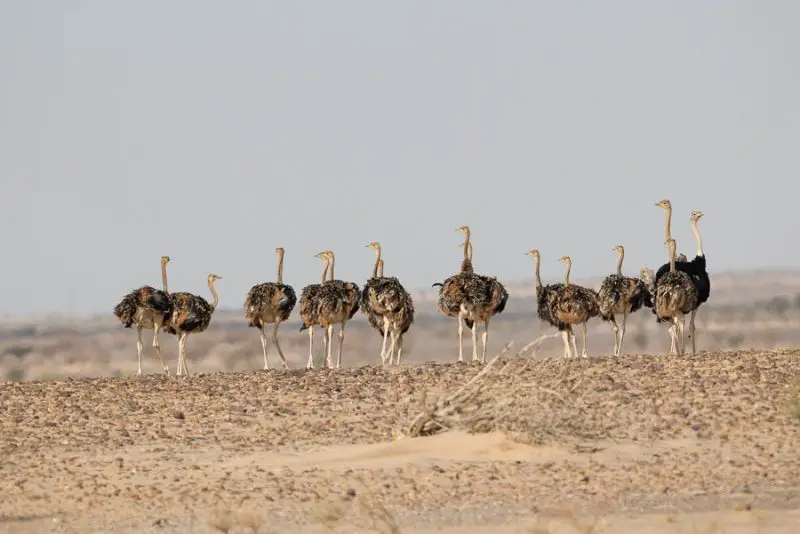
Physical Characteristics
The Red-necked Ostrich (Struthio camelus rothschildi) is a vibrant and colorful species native to East Africa, particularly found in regions like Kenya, Uganda, and Tanzania. Males of this subspecies are particularly striking, with their bright red necks and legs standing out against the darker body feathers. This distinctive red coloration is one of the key features that differentiate the Red-necked ostrich from other ostrich species and plays an important role in attracting females during the breeding season. The contrast between their black bodies and the vivid red neck and legs makes them one of the most eye-catching birds in the ostrich family.
Females, on the other hand, have a more subtle and camouflaged plumage, typically brownish-gray or grayish-brown, which helps them remain hidden during the nesting season. Their plumage also aids in blending into the grasslands and savannas, providing protection from predators as they care for their eggs.
Habitat and Behavior
The Red-necked Ostrich is found in the grasslands and savannas of East Africa, particularly in Kenya, Uganda, and Tanzania. These birds prefer open spaces, where they can roam freely and use their remarkable speed to escape potential predators. The species is highly adapted to life in open habitats, where they can quickly spot threats from a distance due to their excellent vision.
Known for being fast runners, Red-necked ostriches can reach speeds of up to 45 miles per hour (72 km/h), making them one of the fastest bird species on land. Their strong and muscular legs allow them to cover large areas in search of food. Their primary diet consists of grass, seeds, and fruits, though they will occasionally eat small insects or invertebrates when available.
Unlike some other ostrich species, the Red-necked ostrich tends to be more solitary outside of the breeding season. They prefer to live alone or in small groups, typically forming loose associations with other individuals during the non-breeding months. However, during the breeding season, males may be seen competing for the attention of females, using their colorful plumage and courtship displays to attract mates.
8. Korean Ostrich (Struthio camelus orientalis): A Rare and Endangered Species
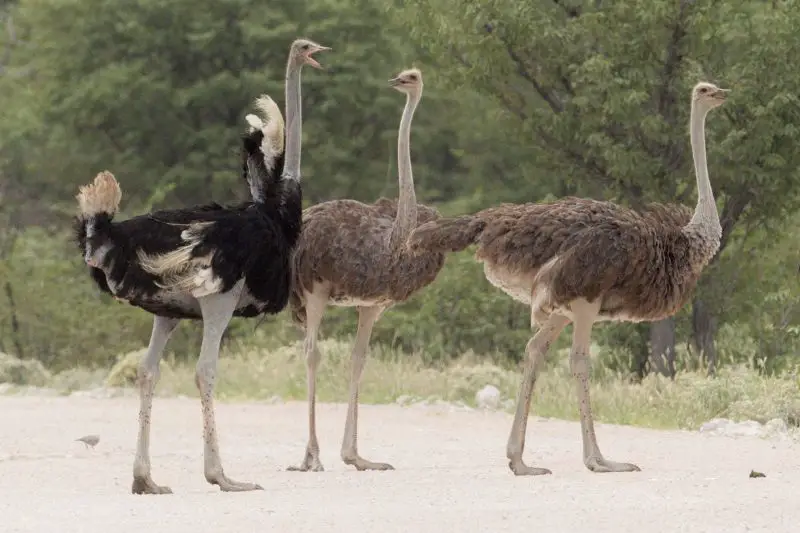
Physical Characteristics
The Korean Ostrich (Struthio camelus orientalis) is one of the rarest and least-known species of ostriches. It is a smaller and more adaptable subspecies compared to its larger relatives. Adult males typically stand about 7 feet (2.1 meters) tall and weigh around 250 pounds (113 kg), making them slightly smaller than other ostrich subspecies such as the Common Ostrich and South African Ostrich.
The physical appearance of the Korean ostrich is generally similar to that of other ostrich species, but it has a few distinct traits. The males typically have dark plumage, while the females have brownish-gray feathers, which helps them blend into their environment. The Korean ostrich’s neck and legs are long and slender, designed for running at high speeds across a variety of terrains.
This species is flightless, like all ostriches, and uses its powerful legs to escape threats and navigate through its diverse habitats. Despite its smaller size, the Korean ostrich is still an impressive runner and capable of reaching speeds of up to 45 miles per hour (72 km/h).
Habitat and Behavior
The Korean Ostrich is found in a limited range, primarily in North Korea and Manchuria (northeastern China). It is known for its unique habitat preferences, often living in wetland areas that overlap with grasslands and forest edges. These habitats provide a variety of food sources and cover for both feeding and nesting. The presence of wetlands gives the species access to an abundance of vegetation, including grasses, seeds, and roots, which constitute a large part of their diet. They are also known to consume insects and small animals, especially during the breeding season when they require more energy.
Due to their wetland habitat, Korean ostriches are adaptable to both dry and moist environments. Their ability to thrive in different climates is one reason why they have managed to survive in such a restricted range. However, this same adaptability makes them particularly vulnerable to environmental changes caused by human activities, such as habitat destruction, pollution, and climate change.
The Korean ostrich is solitary by nature, often found alone or in very small groups, especially outside of the breeding season. They are excellent runners, using their speed and agility to evade predators. These ostriches rely on their keen eyesight to detect potential threats from a long distance. Unlike other species, they tend to be more elusive and avoid human contact, which has contributed to their relatively low visibility in the wild.
Conclusion: Preserving Ostriches for the Future
Ostriches, with their towering height, impressive speed, and unique behaviors, are some of the most incredible animals on Earth. However, these birds face numerous threats from habitat loss, poaching, and climate change, which make conservation efforts crucial. Understanding the different species and their habitats is essential for protecting these magnificent birds and ensuring their survival for generations to come.
By supporting conservation programs and learning more about these extraordinary creatures, we can help preserve the diversity and beauty of the ostrich family.

